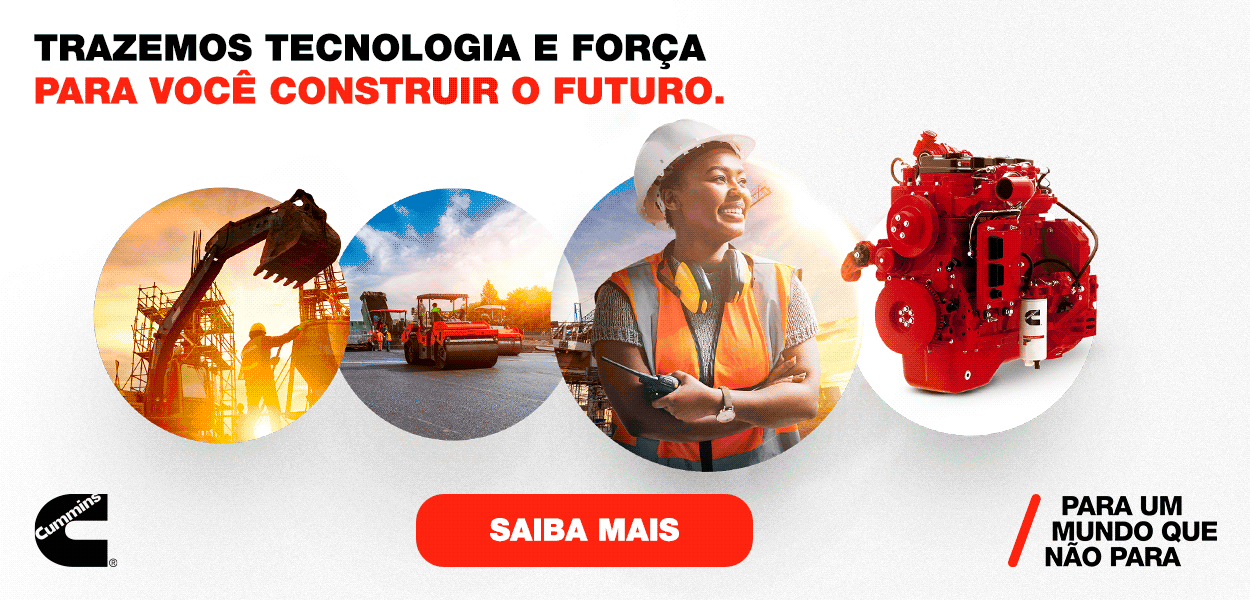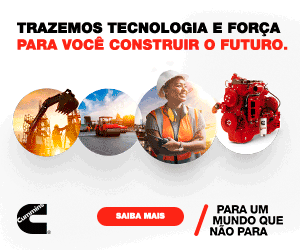Notoriously unknown
More expensive and specific, articulated models are tailored for operations in confined spaces. But rigid machines still are an absolute reference in Brazil
A kind of hybrid version of excavator with loader, the backhoe is one of the more versatile machines used in worksites. It may carry out a wide variety of jobs, what turns it in one of the most sold equipment in the construction industry.
In addition to the availability of a series of attachments, this machine has two different types, according to its frame structure: rigid or articulated (with a pivot between its front and rear axle, making the first axle more “solid” and allowing it to support higher loads). Not too much known in Brazil, articulated backhoes also have an important advantage: better maneuverability for a given wheelbase.
But this does not mean that the models of this type are better than rigid backhoes. Anyhow, performance depends on the application and the working environment where the machine will be used, such as places with restricted motion, for example. In fact, articulated backhoes are not even manufactured in the country. “Generally, they are indicated for applications in restricted places, what affects the maneuverability of the vehicle”, comments Carlos França, marketing manager from Case CE, that produces 12 models of backhoes in the world. All these models are rigid and only one of them is manufactured in Brazil, the 580N. “Since this is a usual problem in Europe, where the streets are narrower, the few manufacturers of articulated models come from that continent.”
According to Paula Araújo, product manager from New Holland Construction for Latin America, articulated machines really have the advantage of better maneuverability, since they have three options of steering (two-wheel, four-wheel and crab). These machines are indicated for specific works in confined spaces. But there is no restriction or disadvantage of one type in relation to the other”, ensures him. “They are differentiated just by the type of application.”
PREDOMINANCE
In this sense, the lack of articulated backhoes shows that maybe they are not so necessary here. And this becomes clear in the options offered by the manufacturers. Caterpillar, for example, has no backhoes with articulated frame in its portfolio. “We produce a wide range of machines with central pivot and side displacement, both of rigid frame”, informs Rodrigo Cera, expert in product application of company models. “In South America, models such as 416F2, 420F2 and 430F2 (with central pivot) are available, being the first two models produced in Campo Largo (PR) and the 430F2 in the plant of Leicester, in the United Kingdom, where also the models 422F2, 428F2, 432F2, 434F2 and 444F2—all with side displacement—are produced.”
In the same way, JCB also produces only rigid-frame machines. “The main feature of our equipment is being multi-task”, tells Ricardo Nery, product manager of the company. “In addition, we have the widest range of attachments available in the market. That is why our models are able to work in several areas, such as construction, rental, agribusiness and works in confined spaces, for example.”
The executive points out that JCB was the pioneer in developing the concept of backhoe, still in 1953. Currently, the smaller machine produced in Brazil is the 1CX. With its width of 1.4 meter and capacity of turning on its own axis, it may operate practically in any environment, ensures Nery. The machine also uses universal quick-couplings and has the feature of complete side displacement. “At the top of the line we have also the models 3CX and 4CX Eco, considered the most efficient of the world in typical task cycles”, says him. “The TorqueLock system allows a fuel economy up to 25 percent in transit and the EcoDig, EcoLoad and EcoRoad systems were designed to reduce even more the consumption.”
The almost-exception of the list is New Holland Construction, that produces two models of backhoe in the country, specifically in the plant of Contagem (MG)—B95B and B110B—and more four models in Italy: B90B, B95B, B110B and B115B. All are rigid-frame models, except the B115B, that is directed to the market of Latin America, excluding Brazil.
Called Four Wheel Steering (4WS), this machine has as its main feature the four-wheel steering, depending on the service needed in the worksite. “Other differentiated feature is the same dimension of front and rear wheels”, says Paula Araújo. “Normally, this type of equipment is used where a lower turning radius, higher maneuverability and higher dumping height are needed.”

Av. Francisco Matarazzo, 404 Cj. 701/703 Água Branca - CEP 05001-000 São Paulo/SP
Telefone (11) 3662-4159
© Sobratema. A reprodução do conteúdo total ou parcial é autorizada, desde que citada a fonte. Política de privacidade














